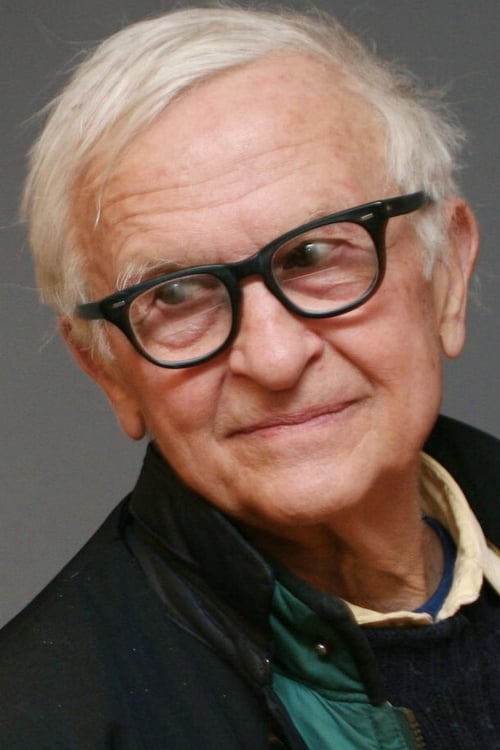
Self
In 1998, documentary filmmaker Robert Drew and his associates attend the Museum of Tolerance.

Director of Photography
The Empire Builder is America’s busiest long-distance train route, running from Chicago to Seattle. Throughout these corridors sit runaways, adventurers, and loners – a myriad of passengers waiting to see what their journey holds. A touching and honest observation, co-directed by the iconic Albert Maysles, In Transit breathes life into the long commute, and contemplates the unknowns that lie at our final destination.

Director
The Empire Builder is America’s busiest long-distance train route, running from Chicago to Seattle. Throughout these corridors sit runaways, adventurers, and loners – a myriad of passengers waiting to see what their journey holds. A touching and honest observation, co-directed by the iconic Albert Maysles, In Transit breathes life into the long commute, and contemplates the unknowns that lie at our final destination.

Director
IRIS pairs legendary 87-year-old documentarian Albert Maysles with Iris Apfel, the quick-witted, flamboyantly dressed 93-year-old style maven who has had an outsized presence on the New York fashion scene for decades. More than a fashion film, the documentary is a story about creativity and how, even in Iris’ dotage, a soaring free spirit continues to inspire. IRIS portrays a singular woman whose enthusiasm for fashion, art and people are life’s sustenance and reminds us that dressing, and indeed life, is nothing but an experiment.

Director of Photography
Born to Fly pushes the boundaries between action and art, daring us to join choreographer Elizabeth Streb and her dancers in pursuit of human flight.
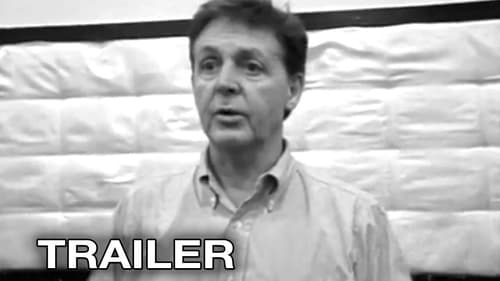
Director
"The Love We Make", a film directed by Albert Maysles ("Gimme Shelter") and Bradley Kaplan, follows Paul McCartney as he journeys through the streets of New York City in the aftermath of the destruction of the World Trade Center on September 11th, 2001. It also chronicles the planning and performance of the benefit concert that took place less than six months after the attacks: "The Concert For New York City".

Colleagues, friends and specialists pay tribute to the filmmaker Mario Ruspoli in a portrait that mixes encounters, archive images and film excerpts. With testimonies from Richard Leacock, Albert Maysles, Edgar Morin, D.A. Pennebaker and others.
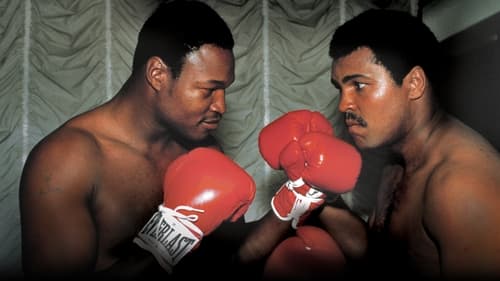
Director of Photography
Em outubro de 1980, Muhammad Ali deixou a aposentadoria para tentar um feito inédito e se tornar campeão mundial de pesos-pesados pela quarta vez, contra seu antigo parceiro de luta Larry Holmes.

Director
Em outubro de 1980, Muhammad Ali deixou a aposentadoria para tentar um feito inédito e se tornar campeão mundial de pesos-pesados pela quarta vez, contra seu antigo parceiro de luta Larry Holmes.
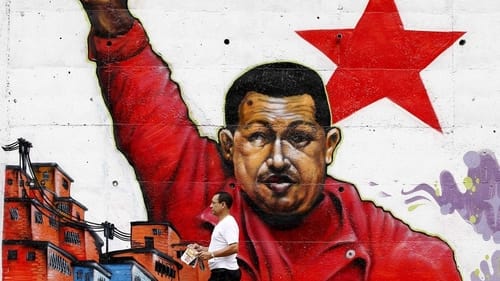
Director of Photography
O diretor Oliver Stone viaja por seis países da América do Sul e ainda Cuba, em uma tentativa de compreender o fenômeno que os levou a ter governos de esquerda na primeira década do século XXI. Através de conversas com Hugo Chávez (Venezuela), Cristina Kirchner (Argentina), Evo Morales (Bolívia), Luiz Inácio Lula da Silva (Brasil), Fernando Lugo (Paraguai), Rafael Correa (Equador) e Raul Castro (Cuba), é analisado o modo como a mídia acompanha cada governo e o maneira como lidam com os Estados Unidos e órgãos mundiais como o FMI.

Himself
From cinema-verite; pioneers Albert Maysles and Joan Churchill to maverick movie makers like Errol Morris, Werner Herzog and Nick Broomfield, the world's best documentarians reflect upon the unique power of their genre. Capturing Reality explores the complex creative process that goes into making non-fiction films. Deftly charting the documentarian's journey, it poses the question: can film capture reality?
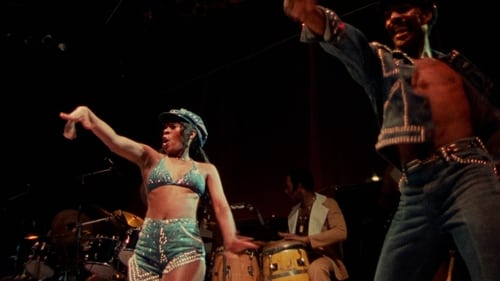
Cinematography
Soul Power is a 2008 documentary film about the Zaire 74 music festival in Kinshasa which accompanied the Rumble in the Jungle heavyweight boxing championship match between Muhammad Ali and George Foreman in October 1974. The film was made from archival footage; other footage shot at the time focusing on the fight was edited to form the film When We Were Kings.

Self
Short documentary on the life and work of photographer and filmmaker Morris Engel
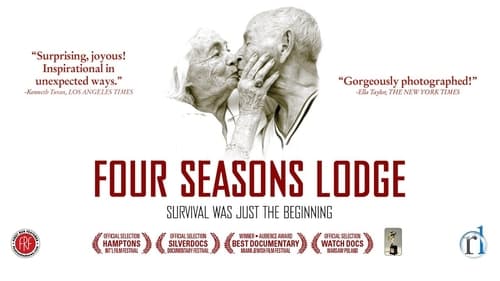
Director of Photography
From the darkness of Hitler's Europe to the mountains of the Catskills, Four Seasons Lodge follows a community of Holocaust survivors who come together each summer to dance, cook, fight and flirt-and celebrate their survival.

Cinematography
A documentary on New York City’s biggest public art project ever, an installation called “The Gates” by Christo and Jeanne Claude.

Director
A documentary on New York City’s biggest public art project ever, an installation called “The Gates” by Christo and Jeanne Claude.

Himself
Esther Robinson's portrait of her uncle Danny Williams, Warhol's onetime lover, collaborator and filmmaker in his own right, offers a exploration of the Factory era, an homage to Williams's talent, a journey of family discovery and a compelling inquiry into Williams's mysterious disappearance at age 27.

Director
Assembled by some of the nation's top documentary filmmakers, this centerpiece film in HBO's 'Addiction' campaign features insights from experts on trends and treatments in the ongoing battle against drug and alcohol abuse. This documentary consists of nine segments that focus on case studies and cutting-edge treatments that challenge traditional beliefs about addiction.
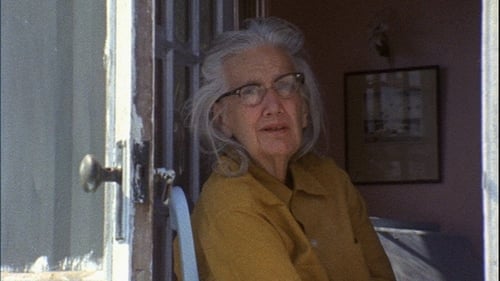
Director of Photography
Mother and daughter - Big Edie and Little Edie Beale - live with six cats in a crumbling house in East Hampton. Little Edie, in her 50s, who wears scarves and bright colors, sings, mugs for the camera, and talks to Al and David Maysles, the filmmakers. Big Edie, in her 70s, recites poetry, comments on her daughter's behavior, and sings "If I Loved You" in fine voice. She talks in short sentences; her daughter in volumes. The film is episodic: friends visit, there's a small fire in the house, Little Edie goes to the shore and swims. She talks about the Catholic Church. She's ashamed that local authorities raided the house because of all the cats. She values being different.

Self
Mother and daughter - Big Edie and Little Edie Beale - live with six cats in a crumbling house in East Hampton. Little Edie, in her 50s, who wears scarves and bright colors, sings, mugs for the camera, and talks to Al and David Maysles, the filmmakers. Big Edie, in her 70s, recites poetry, comments on her daughter's behavior, and sings "If I Loved You" in fine voice. She talks in short sentences; her daughter in volumes. The film is episodic: friends visit, there's a small fire in the house, Little Edie goes to the shore and swims. She talks about the Catholic Church. She's ashamed that local authorities raided the house because of all the cats. She values being different.

Director
Mother and daughter - Big Edie and Little Edie Beale - live with six cats in a crumbling house in East Hampton. Little Edie, in her 50s, who wears scarves and bright colors, sings, mugs for the camera, and talks to Al and David Maysles, the filmmakers. Big Edie, in her 70s, recites poetry, comments on her daughter's behavior, and sings "If I Loved You" in fine voice. She talks in short sentences; her daughter in volumes. The film is episodic: friends visit, there's a small fire in the house, Little Edie goes to the shore and swims. She talks about the Catholic Church. She's ashamed that local authorities raided the house because of all the cats. She values being different.
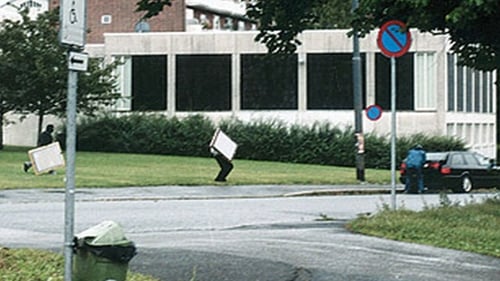
Director of Photography
In 1990, thieves absconded with 13 masterpieces -- including works by Rembrandt and Vermeer -- from Boston's Isabella Stewart Gardner Museum, pulling off the greatest art heist in U.S. history. Rebecca Dreyfus's investigative documentary delves into this modern mystery, piecing together clues gleaned from archival documents, art critics, historians, collectors and informants (both credible and dubious) to shed light on the as-yet unsolved case. Instant QueuePlay Trailer

Cinematography
During production on the film "The Life Aquatic with Steve Zissou", documentary filmmakers followed the cast and crew of a film which depicts other documentary filmmakers who follow animal life. In this film, we get a first hand look at the sets and come very close to many of the cast and crew members at work, especially Bill Murray and Wes Anderson.

Director
During production on the film "The Life Aquatic with Steve Zissou", documentary filmmakers followed the cast and crew of a film which depicts other documentary filmmakers who follow animal life. In this film, we get a first hand look at the sets and come very close to many of the cast and crew members at work, especially Bill Murray and Wes Anderson.

Himself
Michael Wilson, like the subject of his film, is trying to get an interview with a multi-millionaire; however, in this case, that millionaire is Michael Moore himself.

Cinematography
A documentary on the life and work of artist Jeff Koons, told through the perspective of Koons himself, curators, gallerists, and fellow artists (Chuck Close, Julian Schnabel, etc.).

Camera Operator
TV documentary about American film director Wes Anderson.

Director
TV documentary about American film director Wes Anderson.
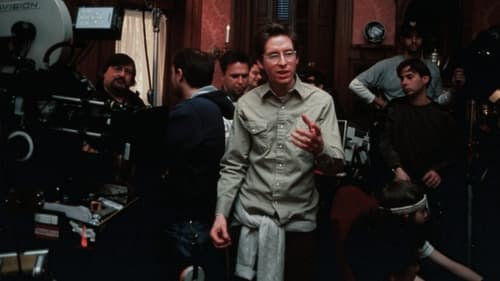
Director
TV documentary about American film director Wes Anderson during the time he was making The Royal Tenenbaums (2001).

Director
This heartbreaking documentary depicts the extreme poverty of an African-American family and their Mississippi Delta school district. LaLee's Kin takes us deep into the Mississippi Delta and the intertwined lives of LaLee Wallace, a great-grandmother struggling to hold her world together in the face of dire poverty, and Reggie Barnes, superintendent of the embattled West Tallahatchie School System. The film explores the painful legacy of slavery and sharecropping in the Delta.

Cinematography
Our medical system is geared toward healing patients. But what if there's no cure available? This moving, intimate documentary uses three cases to explore how hospice care prepares both terminally ill patients and their families for a gentle, safe passage. While patients are given comfort, companionship, dignity and peace, families are prepared for their inevitable loss.

Director
Our medical system is geared toward healing patients. But what if there's no cure available? This moving, intimate documentary uses three cases to explore how hospice care prepares both terminally ill patients and their families for a gentle, safe passage. While patients are given comfort, companionship, dignity and peace, families are prepared for their inevitable loss.
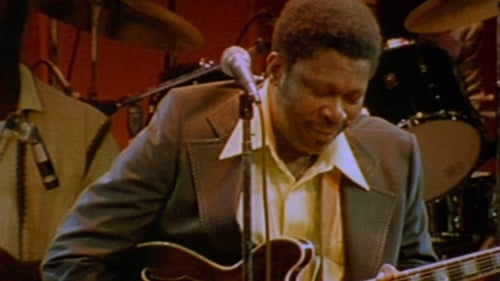
Director of Photography
É 1974. Muhammad Ali tem 32 anos e o seu passado é considerado por muitos, nobre. George Foreman é dez anos mais novo e é o campeão mundial dos pesos pesados. O promotor Don King quer fazer o seu próprio nome e oferece aos lutadores cinco milhões de dólares para cada um, para lutarem um contra o outro, e quando aceitam, King só tem que vir com o dinheiro. Ele encontra um patrocinador, Mobutu Sese Suko, o ditador do Zaire, e "Rumble in the Jungle" é definido, incluindo um festival musical que apresenta alguns dos melhores artistas negros da América, como James Brown e B.B. King.

Director
Accent on the Offbeat is a cinema vérité film about the creation and premiere of the ballet Jazz (Six Syncopated Movements), composed by trumpet virtuoso Wynton Marsalis and choreographed by Ballet Master in Chief Peter Martins of the New York City Ballet. A focus of the film is the remarkable contrast - in background, temperament, style and creative approach - between Martins and Marsalis as they unite the disparate worlds of ballet and jazz.
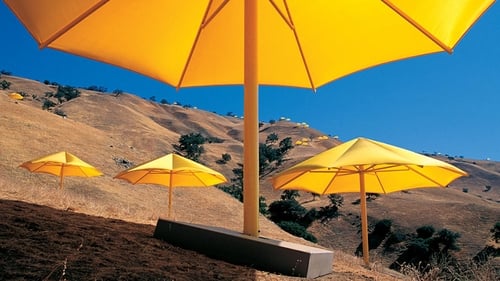
Director
A documentary about artists Christo and Jeanne-Claude's 1991 grand-scale environmental art project in Japan and California.

Self (Archive Footage)
Wanda Horowitz reminisces about her husband, the great pianist Vladimir Horowitz, with clips from his television appearances.

Cinematography
Um intenso e provocativo olhar para o lado humano de uma das questões políticas e morais mais controversas de nossos
tempos.

Producer
Um intenso e provocativo olhar para o lado humano de uma das questões políticas e morais mais controversas de nossos
tempos.

Director
Um intenso e provocativo olhar para o lado humano de uma das questões políticas e morais mais controversas de nossos
tempos.
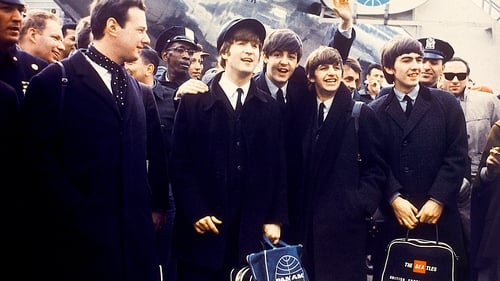
Director
The Beatles First US Visit uniquely chronicles the inside story of the two remarkable weeks when Beatlemania first ignited America. The pioneering Maysles Brothers who filmed at the shoulders of John, Paul, George and Ringo, innovated an intimate documentary style of film-making which set the benchmark for rock and roll cinematography that remains to this day.

Director
Documentary showing the return to his native Russia of Mstislav Rostropovitch, includes extensive performance footage and coverage of political and personal matters for the cellist.
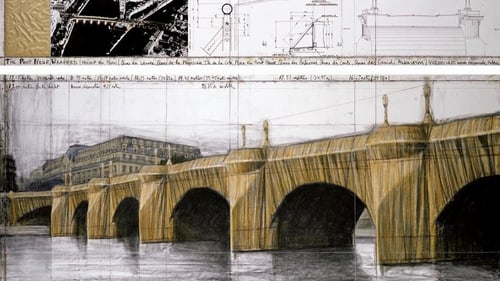
Director
Documentary about conceptual artist Christo and his wife Jeanne-Claude's attempt to "wrap" the Pont-Neuf in Paris.

Director of Photography
Jessye Norman Sings Carmen is a gripping vérité study of the famous dramatic soprano’s approach to mastering Bizet’s heroine in recording sessions with Seiji Ozawa and the Orchestre National de France. Musical segments include performances of three arias and the great duets between Carmen and Don José

Director
Jessye Norman Sings Carmen is a gripping vérité study of the famous dramatic soprano’s approach to mastering Bizet’s heroine in recording sessions with Seiji Ozawa and the Orchestre National de France. Musical segments include performances of three arias and the great duets between Carmen and Don José

Executive Producer
James Baldwin was at once a major 20th century American author, a Civil Rights activist and, for two crucial decades, a prophetic voice calling Americans, black and white, to confront their shared racial tragedy.
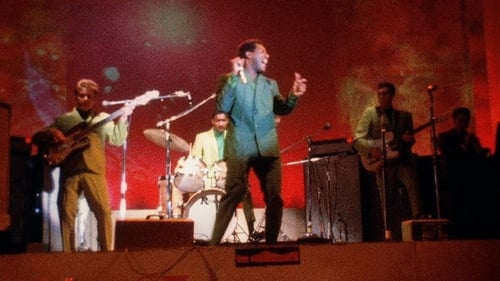
Camera Operator
Renowned documentary filmmaker D.A. Pennebaker captures Otis Redding in his ascendancy, singing at the historic Monterey International Pop Festival in June 1967. Comedian Tom Smothers introduces Redding to a crowd that is leaving -- until Redding grabs them with his charged rendition of "Shake." Redding's performance also includes "Respect" (which he wrote), "I've Been Loving You Too Long," "Satisfaction," and "Try a Little Tenderness." Tragically, Redding died in a plane crash six months later. An innovative filmmaker who started in the 1950s making experimental films, Pennebaker garnered an Oscar nomination for Best Documentary Feature in 1993 for The War Room, his behind-the-scenes look at Bill Clinton's 1992 campaign. His other subjects have included Norman Mailer, Bob Dylan, and David Bowie.
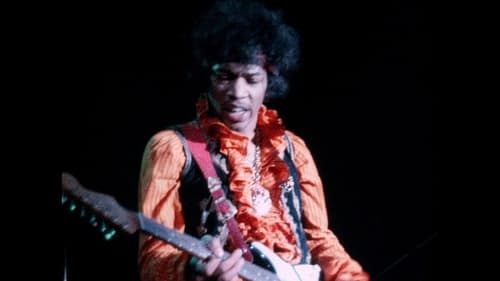
Camera Operator
It's no exaggeration to say this might be the most intense and groundbreaking 45-minute performance in the history of rock. Jimi Hendrix's debut American set at 1967's Monterey Pop Festival is generally considered one of the most radical and legendary live shows ever. Virtually unknown to American audiences at the time, even though he was already an established entity in the UK, Hendrix and his two-piece Experience explode on stage, ripping through blues classics "Rock Me Baby" and Howlin' Wolf's "Killing Floor," interpreting and electrifying Bob Dylan's "Like a Rolling Stone," debuting songs from his yet-to-be-released first album and closing with the now historic sacrificing/burning of his guitar during an unhinged version of "Wild Thing" that even its writer Chip Taylor would never have imagined. Hendrix uses feedback and distortion to enhance the songs in whisper-to-scream intensity, blazing territory that had not been previously explored with as much soul-frazzled power.
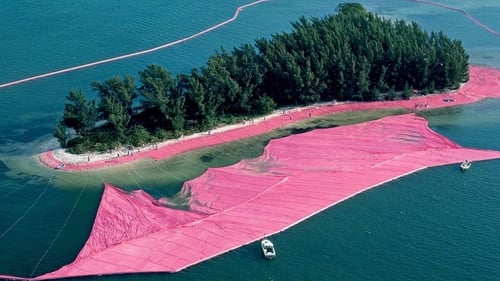
Director
The Maysles' third film about the artists sees them trying to get three projects off the ground: wrapping the Pont Neuf, the oldest bridge in Paris; wrapping the Reichstag; and surrounding eleven man-made islands in Florida with pink plastic sheets. As the latter is the only one that gets approval, it gets the bulk of this film.

Director
In March 1987, pianist Vladimir Horowitz embarked on an
extraordinary project. For the first time in 35 years, he
agreed to record with a symphony orchestra in a studio.
He chose the conductor, Carlo Maria Giulini, the orchestra,
the La Scala Philharmonic, and the location, the Abanella
recording studio of La Scala in Milan. Horowitz steadfastly
refused to allow the month-long sessions to be filmed, until
the evening before the last scheduled session when he
unexpectedly changed his mind. His manager, Peter Gelb,
immediately telephoned Albert Maysles and Susan Froemke
in New York, the co-filmmakers of "Vladimir Horowitz:
The Last Romantic." That same night, the Maysles film
crew flew from New York.

Director
This intimate portrait of the legendary conductor Seiji Ozawa focuses on the Japanese master and teacher's career, his advocacy of modern composers and the behind-the-scenes world of the symphony orchestra.

Director of Photography
A stimulating study which features concert footage and interviews with the master pianist. Includes many of his favorite pieces.

Director
Through the poetic lens of visionary filmmakers Albert and David Maysles, Muhammad and Larry explores the unique and poignant relationship between two great boxers and two remarkable men who were more than just competitors. They were once teacher and student, and remain close friends.
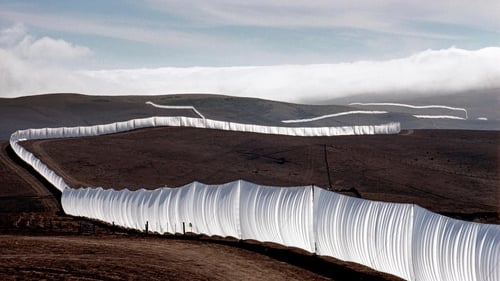
Director
Second in the series by the Maysles brothers documenting the monuments/sculptures of Christo, whose art projects are landscape-scaled, and more "pop" performance art designed to question how we relate to art in the public sphere, especially when it's as oblique, non-political (at least, that is what he would claim), and neutral as running a fence through a landscape.
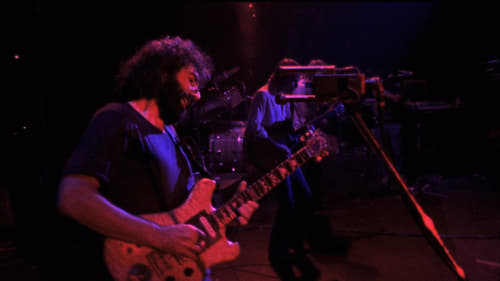
Director of Photography
Released in 1977 and directed by Jerry Garcia, is a film that captures performances from the Grateful Dead's October 1974 five-night stand at the Winterland Ballroom in San Francisco. This end-of-tour run marked the beginning of an extended hiatus for the band, with no shows planned for 1975. The movie also faithfully portrays the burgeoning Deadhead scene. The film features the "Wall of Sound" concert sound system that the Dead used for all of 1974.
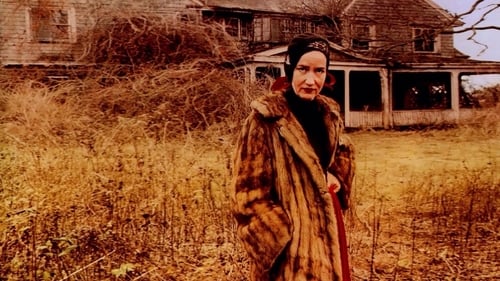
Director of Photography
Edie Bouvier Beale and her mother, Edith, two aging, eccentric relatives of Jackie Kennedy Onassis, are the sole inhabitants of a Long Island estate. The women reveal themselves to be misfits with outsized, engaging personalities. Much of the conversation is centered on their pasts, as mother and daughter now rarely leave home.

Producer
Edie Bouvier Beale and her mother, Edith, two aging, eccentric relatives of Jackie Kennedy Onassis, are the sole inhabitants of a Long Island estate. The women reveal themselves to be misfits with outsized, engaging personalities. Much of the conversation is centered on their pasts, as mother and daughter now rarely leave home.

Self (uncredited)
Edie Bouvier Beale and her mother, Edith, two aging, eccentric relatives of Jackie Kennedy Onassis, are the sole inhabitants of a Long Island estate. The women reveal themselves to be misfits with outsized, engaging personalities. Much of the conversation is centered on their pasts, as mother and daughter now rarely leave home.

Director
Edie Bouvier Beale and her mother, Edith, two aging, eccentric relatives of Jackie Kennedy Onassis, are the sole inhabitants of a Long Island estate. The women reveal themselves to be misfits with outsized, engaging personalities. Much of the conversation is centered on their pasts, as mother and daughter now rarely leave home.

Director
The Maysles profile a poor white Georgian family struggling to survive with the realities of thirteen children.
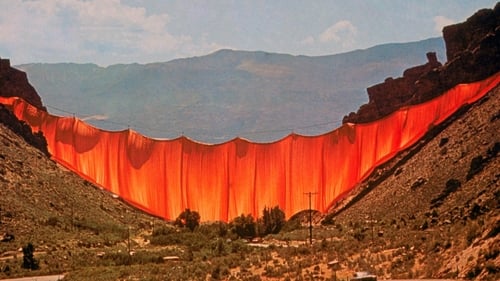
Director
Oscar nominated documentary about the largest man-made curtain in the world as "sculpture".

Self
Uma crônica detalhada da famosa turnê dos Estados Unidos de 1969 pela banda de rock britânica The Rolling Stones, que culminou com o show desastroso e trágico realizado em 6 de dezembro no Altamont Speedway Free Festival, um evento de significado histórico, pois marcou o fim de uma era: a geração da paz e do amor tornou-se subitamente a geração da desilusão.

Director of Photography
Uma crônica detalhada da famosa turnê dos Estados Unidos de 1969 pela banda de rock britânica The Rolling Stones, que culminou com o show desastroso e trágico realizado em 6 de dezembro no Altamont Speedway Free Festival, um evento de significado histórico, pois marcou o fim de uma era: a geração da paz e do amor tornou-se subitamente a geração da desilusão.

Director
Uma crônica detalhada da famosa turnê dos Estados Unidos de 1969 pela banda de rock britânica The Rolling Stones, que culminou com o show desastroso e trágico realizado em 6 de dezembro no Altamont Speedway Free Festival, um evento de significado histórico, pois marcou o fim de uma era: a geração da paz e do amor tornou-se subitamente a geração da desilusão.

Cinematography

Director

The Newsweek critic, Jack Kroll, interviews Albert and David Maysles about their new film, Salesman (1968).
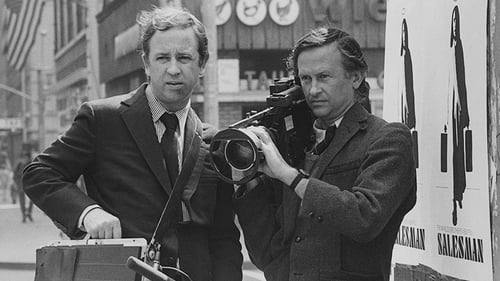
Cinematography
This documentary from Albert and David Maysles follows the bitter rivalry of four door-to-door salesmen working for the Mid-American Bible Company: Paul "The Badger" Brennan, Charles "The Gipper" McDevitt, James "The Rabbit" Baker and Raymond "The Bull" Martos. Times are tough for this hard-living quartet, who spend their days traveling through small-town America, trying their best to peddle gold-leaf Bibles to an apathetic crowd of lower-middle-class housewives and elderly couples.

Producer
This documentary from Albert and David Maysles follows the bitter rivalry of four door-to-door salesmen working for the Mid-American Bible Company: Paul "The Badger" Brennan, Charles "The Gipper" McDevitt, James "The Rabbit" Baker and Raymond "The Bull" Martos. Times are tough for this hard-living quartet, who spend their days traveling through small-town America, trying their best to peddle gold-leaf Bibles to an apathetic crowd of lower-middle-class housewives and elderly couples.

Director
This documentary from Albert and David Maysles follows the bitter rivalry of four door-to-door salesmen working for the Mid-American Bible Company: Paul "The Badger" Brennan, Charles "The Gipper" McDevitt, James "The Rabbit" Baker and Raymond "The Bull" Martos. Times are tough for this hard-living quartet, who spend their days traveling through small-town America, trying their best to peddle gold-leaf Bibles to an apathetic crowd of lower-middle-class housewives and elderly couples.
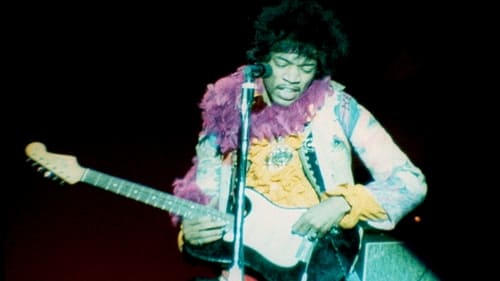
Camera Operator
O festival Monterey Pop realizado em 1967 é considerado por muitos o precursor dos festivais de música tal como os conhecemos hoje em dia. este filme, o diretor D. A. Pennebaker registra os incríveis shows e conversa com o público para captar a emoção desta experiência pioneira.

Director
Journalists from all over America meet Marlon Brando in a New York hotel room to interview him about his new film, Morituri. Seeing this as an opportunity to let the legendary actor promote the film, they find Brando unwilling to talk about it, instead he is more interested in larking about and turning on the charm when being interviewed by a former winner of the Miss USA competition.

Director
Produced by 20th Century Fox, this Maysles Brothers short was intended to help promote the release of Disney's Fantastic Voyage (1966) for which Salvador Dali was artistic consultant. Shot in and around New York, the film features a cameo by a bikini clad Raquel Welch, star of Fantastic Voyage and Dali's muse for a series of portraits of Hollywood starlets.

Producer
Orson Welles pitches to potential investors his vision of a largely improvised bullfighter movie about an existential, James Dean type troubadour who sets himself apart from other matadors. In front of an audience of wealthy arts patrons, Welles pontificates on the state of cinema, the filmmaking process, and the art of bullfighting.

Director
Orson Welles pitches to potential investors his vision of a largely improvised bullfighter movie about an existential, James Dean type troubadour who sets himself apart from other matadors. In front of an audience of wealthy arts patrons, Welles pontificates on the state of cinema, the filmmaking process, and the art of bullfighting.

Director of Photography
Orson Welles pitches to potential investors his vision of a largely improvised bullfighter movie about an existential, James Dean type troubadour who sets himself apart from other matadors. In front of an audience of wealthy arts patrons, Welles pontificates on the state of cinema, the filmmaking process, and the art of bullfighting.

Producer
At his Long Island beach house, and on the occasion of the publication of his masterful nonfiction novel In Cold Blood, reporter Karen Dennison interviews celebrated writer Truman Capote, who displays his exuberant personality, makes witty jokes, shares his thoughts on writing, reflects on various aspects of the book and, in a sweet and endearing voice, reads and explains some of its highlights.

Director of Photography
At his Long Island beach house, and on the occasion of the publication of his masterful nonfiction novel In Cold Blood, reporter Karen Dennison interviews celebrated writer Truman Capote, who displays his exuberant personality, makes witty jokes, shares his thoughts on writing, reflects on various aspects of the book and, in a sweet and endearing voice, reads and explains some of its highlights.

Editor
At his Long Island beach house, and on the occasion of the publication of his masterful nonfiction novel In Cold Blood, reporter Karen Dennison interviews celebrated writer Truman Capote, who displays his exuberant personality, makes witty jokes, shares his thoughts on writing, reflects on various aspects of the book and, in a sweet and endearing voice, reads and explains some of its highlights.

Director
At his Long Island beach house, and on the occasion of the publication of his masterful nonfiction novel In Cold Blood, reporter Karen Dennison interviews celebrated writer Truman Capote, who displays his exuberant personality, makes witty jokes, shares his thoughts on writing, reflects on various aspects of the book and, in a sweet and endearing voice, reads and explains some of its highlights.
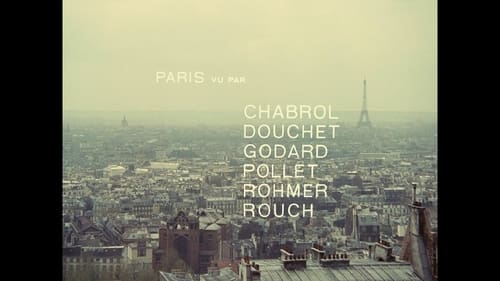
Director of Photography
Six vignettes set in different sections of Paris, by six directors. St. Germain des Pres (Douchet), Gare du Nord (Rouch), Rue St. Denis (Pollet), and Montparnasse et Levallois (Godard) are stories of love, flirtation and prostitution; Place d'Etoile (Rohmer) concerns a haberdasher and his umbrella; and La Muette (Chabrol), a bourgeois family and earplugs.

Producer
Filmed at New York’s Carnegie Hall, Cut Piece documents one of Yoko Ono’s most powerful conceptual pieces. Performed by the artist herself, Ono sits motionless on the stage after inviting the audience to come up and cut away her clothing in a denouement of the reciprocity between victim and assailant.

Director
Filmed at New York’s Carnegie Hall, Cut Piece documents one of Yoko Ono’s most powerful conceptual pieces. Performed by the artist herself, Ono sits motionless on the stage after inviting the audience to come up and cut away her clothing in a denouement of the reciprocity between victim and assailant.

Director
Told in the Maysles’ intimatible style, IBM: A SELF PORTRAIT captures the future corporate juggernaut at an early stage of their development. The emphasis here is on the human ingenuity behind the technology industry-- the colorful technicians and executives working together to create a future design for living.
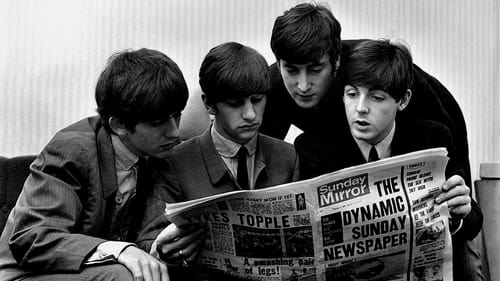
Director of Photography
Nova York, EUA, fevereiro de 1964. Cinco dias cansativos na vida de George, John, Paul e Ringo, os Fab Four, The Beatles: a recepção histérica dos fãs no aeroporto JFK; várias coletivas de imprensa; em seus quartos no Plaza Hotel; nos bastidores do Ed Sullivan Show; saindo com o lendário DJ Murray the K; e o frenético retorno para casa.

Director
Nova York, EUA, fevereiro de 1964. Cinco dias cansativos na vida de George, John, Paul e Ringo, os Fab Four, The Beatles: a recepção histérica dos fãs no aeroporto JFK; várias coletivas de imprensa; em seus quartos no Plaza Hotel; nos bastidores do Ed Sullivan Show; saindo com o lendário DJ Murray the K; e o frenético retorno para casa.

Cinematography
The life of the world’s top model Jean Shrimpton and her svengali photographer David Bailey.

Director
Albert and David Maysles (Gimme Shelter) directed this 53-minute documentary about movie tycoon Joseph E. Levine (1963).

Director
Trabalho do início da carreira dos irmãos Maysles para a emissora NBC. Produzido no auge da Guerra Fria pelo aclamado roteirista Bo Goldman, aborda a vida de Anastasia Stevens, uma dançarina americana no Ballet Bolshoi.
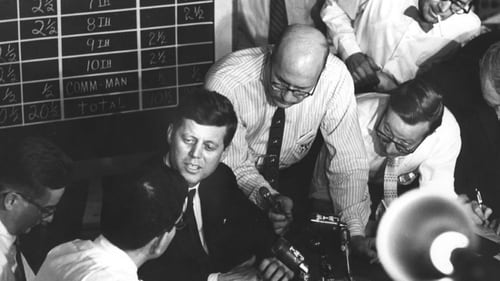
Director
A look at the daily business of U.S. President John F. Kennedy, with a focus on some of the political issues he faces six weeks into his term.

Director
This early travelogue film, made in a Kenyan train station, captures an impromptu musical performance. Some passengers eagerly join in while others sleep—blissfully unaware of the performance taking place around them.

Director of Photography
This early travelogue film, made in a Kenyan train station, captures an impromptu musical performance. Some passengers eagerly join in while others sleep—blissfully unaware of the performance taking place around them.

Producer
This early travelogue film, made in a Kenyan train station, captures an impromptu musical performance. Some passengers eagerly join in while others sleep—blissfully unaware of the performance taking place around them.

Cinematography
After the US forces Cuba out of the OAS, demonstrations erupt in Venezuela. In Cuba Castro addresses a rally of one million people.
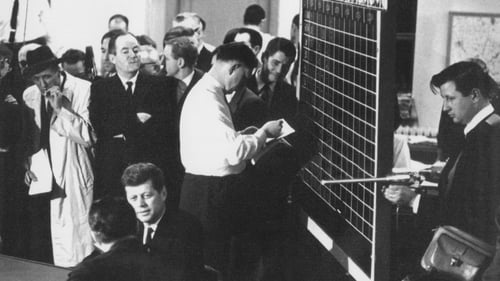
Camera Operator
Primary is a documentary film about the primary elections between John F. Kennedy and Hubert Humphrey in 1960. Primary is the first documentary to use light equipment in order to follow their subjects in a more intimate filmmaking style. This unconventional way of filming created a new look for documentary films where the camera’s lens was right in the middle of what ever drama was occuring.

Director of Photography
Primary is a documentary film about the primary elections between John F. Kennedy and Hubert Humphrey in 1960. Primary is the first documentary to use light equipment in order to follow their subjects in a more intimate filmmaking style. This unconventional way of filming created a new look for documentary films where the camera’s lens was right in the middle of what ever drama was occuring.
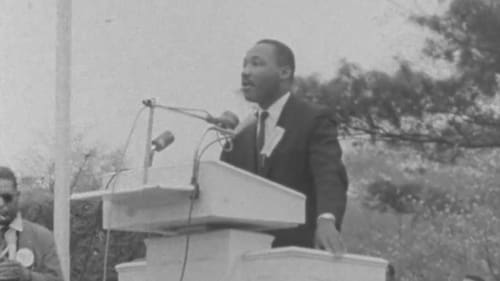
Camera Operator
Integration Report 1, Madeline Anderson's trailblazing debut, was the first known documentary by an African American female director. With tenacity, empathy and skill, Anderson assembles a vital record of desegregation efforts around the country in 1959 and 1960, featuring footage by documentary legends Albert Maysles and Richard Leacock and early Black cameraman Robert Puello, singing by Maya Angelou, and narration by playwright Loften Mitchell. Anderson fleetly moves from sit-ins in Montgomery, Alabama to a speech by Martin Luther King Jr. in Washington, D.C. to a protest of the unprosecuted death in police custody of an unarmed Black man in Brooklyn, capturing the incredible reach and scope of the civil rights movement, and working with this diverse of footage, as she would later say, “like an artist with a palette using different colors.”
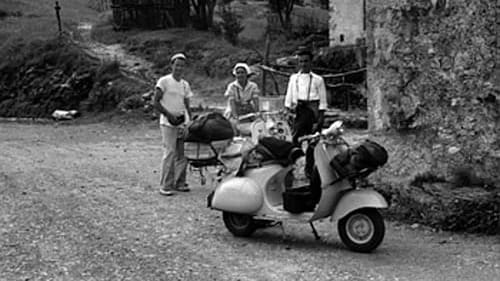
Director
Albert Maysles' visual diary of the faces and places encountered along a cross country motorscooter ride through the Soviet Union in the late 1950s.

Director of Photography
Albert Maysles' visual diary of the faces and places encountered along a cross country motorscooter ride through the Soviet Union in the late 1950s.

Producer
Albert Maysles' visual diary of the faces and places encountered along a cross country motorscooter ride through the Soviet Union in the late 1950s.

Director
In 1955, Albert Maysles traveled by motorcycle throughout Russia. During this trip, he shot what was to become his first film, 'Psychiatry in Russia', an unprecedented view into Soviet mental healthcare. Originally televised by the David Garroway Show on NBC-TV in 1956.

Director of Photography
In 1955, Albert Maysles traveled by motorcycle throughout Russia. During this trip, he shot what was to become his first film, 'Psychiatry in Russia', an unprecedented view into Soviet mental healthcare. Originally televised by the David Garroway Show on NBC-TV in 1956.

Writer
In 1955, Albert Maysles traveled by motorcycle throughout Russia. During this trip, he shot what was to become his first film, 'Psychiatry in Russia', an unprecedented view into Soviet mental healthcare. Originally televised by the David Garroway Show on NBC-TV in 1956.

Camera Operator
ILONA, UPSTAIRS is a portrait of an artist; a glimpse at a butterfly who wants no association with her life as a caterpillar. In this mixed format documentary, deftly filmed in part by Albert Maysles, Ilona sings, dances, orates, paints, swims, and smells the roses, but will not, under any circumstances, face the specifics of her painful past. Melissa Hammel, the director and Ilona's downstairs neighbor, aspires to unearth some of Ilona's many skeletons in order to learn how one transitions from a place of great sorrow to a place of great joy. Sometimes Melissa tip-toes around issues, sometimes she asks directly. Repeatedly, however, she is met with a stiff arm. Perhaps the more important lessons are found in Ilona's present, as she's insisted all along.
